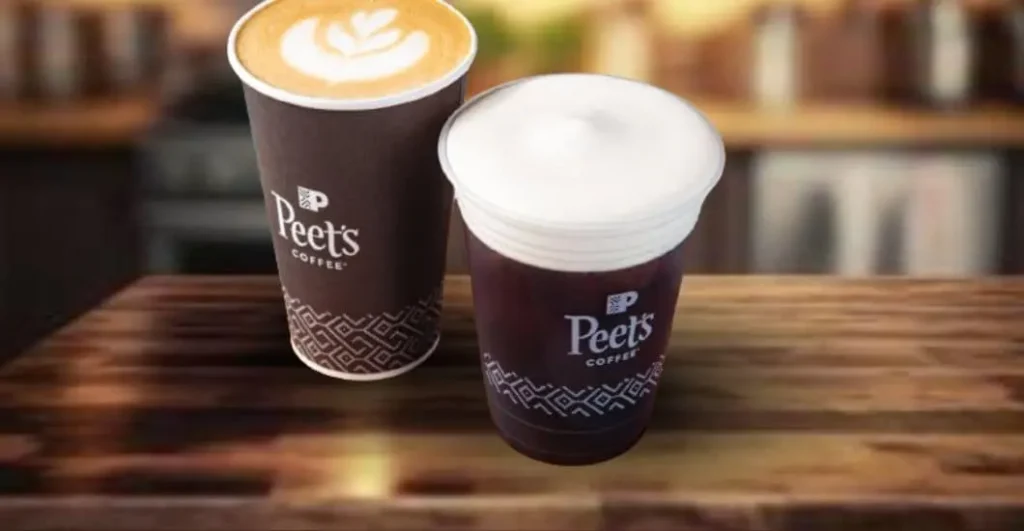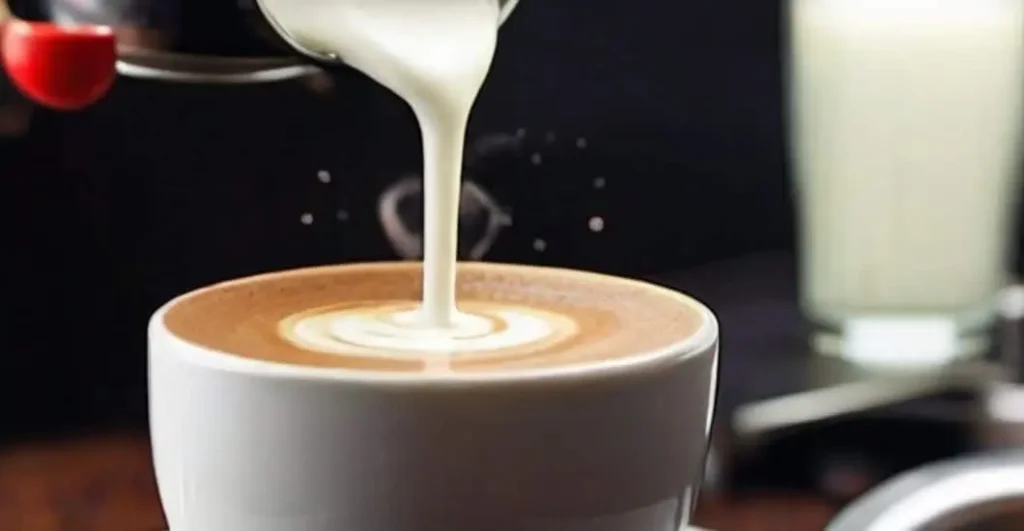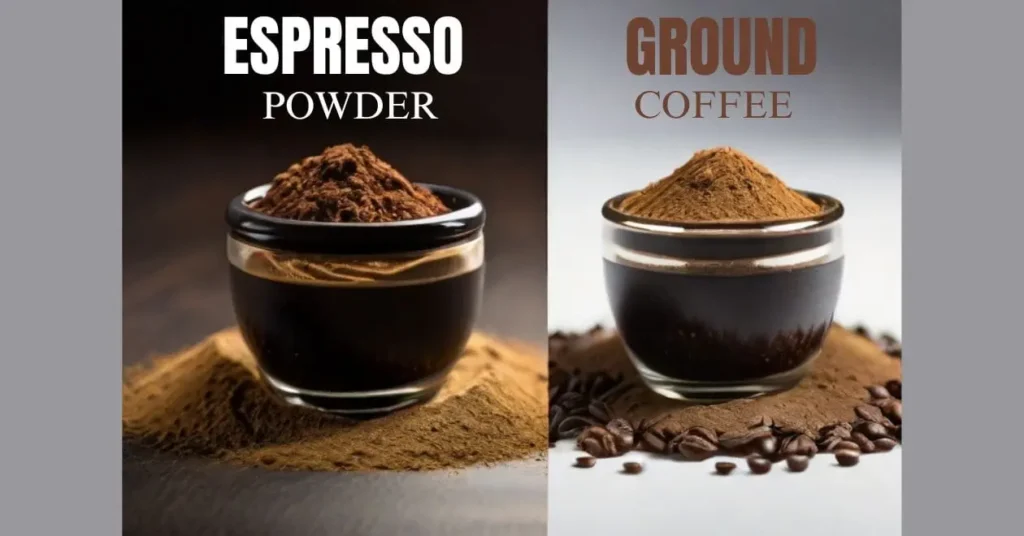A wet cappuccino has more steamed milk, while a dry cappuccino has more foam. The choice between wet and dry cappuccino comes down to personal preference and the desired texture and taste.
Cappuccinos are a popular choice among coffee enthusiasts, with the traditional wet cappuccino offering a creamier texture due to the higher milk content. On the other hand, the dry cappuccino has a lighter and frothier consistency, appealing to those who enjoy the distinct texture of foam.
Understanding the difference between wet and dry cappuccino can enhance the coffee-drinking experience, allowing individuals to select the option that best suits their palate. Whether you prefer the silky smoothness of a wet cappuccino or the airy foam of a dry cappuccino, both versions offer a delicious and satisfying coffee experience.
Defining Wet Cappuccino

A wet cappuccino is a popular variation of the classic cappuccino. It is known for its creamy and velvety texture, making it a delightful treat for coffee lovers. We will explore the ingredients and preparation as well as the texture and taste of a wet cappuccino.
Ingredients And Preparation
The preparation of a wet cappuccino involves a few key ingredients and a precise brewing process. Let’s take a look at what goes into making this delicious beverage:
- Espresso:
- High-quality espresso forms the foundation of any cappuccino, including the wet version.
- Bold and rich in flavor, the espresso is brewed using a specialized machine that forces hot water through finely ground coffee beans.
- Steamed milk:
- Unlike traditional cappuccinos that feature equal parts espresso, steamed milk, and foam, a wet cappuccino has a higher proportion of steamed milk.
- The milk is steamed to create a creamy and luxurious texture, offering a delightful contrast to the bold flavor of the espresso.
- Foamed milk:
- While the foam in a wet cappuccino is not as pronounced as in a dry cappuccino, it still adds a subtle layer of frothiness to the drink.
- The foam is created by aerating the milk, either with a steam wand or a milk frother, resulting in tiny bubbles that enhance the overall texture.
Texture And Taste
The texture and taste of a wet cappuccino set it apart from its dry counterpart. Here’s what to expect:
- Texture:
- Due to the higher proportion of steamed milk, a wet cappuccino has a smooth and velvety texture.
- The creamy consistency creates a luxurious mouthfeel that envelops your taste buds with every sip.
- Taste:
- The bold flavor of the espresso shines through in a wet cappuccino, offering a robust and satisfying taste.
- The milk adds a touch of sweetness and creaminess, beautifully complementing the richness of the espresso.
A wet cappuccino offers a delightful coffee experience with its creamy texture and rich taste. The precise combination of espresso, steamed milk, and foam creates a harmonious balance that is sure to please coffee enthusiasts.
Defining Dry Cappuccino

When it comes to indulging in the world of coffee, there are few delights as satisfying as a perfectly crafted cappuccino. This classic Italian beverage, made from espresso and steamed milk, offers a harmonious balance of rich flavors and creamy textures. But if you’re a coffee aficionado, you may have heard of a variation known as “dry cappuccino.” This intriguing twist on the traditional cappuccino takes the experience to a new level, offering a unique taste and texture that sets it apart. Let’s explore what makes a dry cappuccino so special!
Ingredients And Preparation
To truly understand the essence of a dry cappuccino, we must start with its key components. Just like a regular cappuccino, espresso is the star of the show. This concentrated form of coffee is achieved by forcing hot water through finely ground coffee beans under high pressure. However, what sets the dry cappuccino apart is the amount of foam it contains. While a regular cappuccino typically has an equal ratio of espresso, steamed milk, and foam, a dry cappuccino has less milk and more foam.
Texture And Taste
The emphasis on foam in a dry cappuccino results in a distinctly different texture compared to its wet counterpart. The foam in a dry cappuccino is light and airy, creating a velvety and frothy sensation on the palate. The reduced amount of milk allows the foam to shine, delivering a drier mouthfeel. This unique texture offers a delightful contrast to the bold and robust flavors of the espresso.
When it comes to taste, the reduced presence of milk in a dry cappuccino allows the flavors of the espresso to take center stage. The stronger and more concentrated espresso shines through, offering a bolder and more intense coffee experience. The foam adds a touch of sweetness and creaminess, further enhancing the overall flavor profile.
It’s worth noting that the flavor and texture of a dry cappuccino will vary depending on the expertise of the barista and the quality of the ingredients used. A skilled barista can create a beautifully balanced dry cappuccino with the perfect ratio of foam to espresso, resulting in a harmonious blend of flavors and textures.
Espresso Ratio

Espresso Ratio is a crucial aspect in determining the texture and flavor of a cappuccino. Understanding the difference between wet and dry ratios and their impact on flavor is essential to mastering the art of making a perfect cappuccino.
The Difference Between Wet And Dry Ratios
The wet and dry ratios in cappuccinos refer to the amount of milk foam used in relation to the amount of steamed milk. A wet cappuccino has a higher ratio of steamed milk to foam, resulting in a creamier texture, while a dry cappuccino has a higher foam to milk ratio, creating a drier, frothier texture.
Impact On Flavor
The espresso ratio in wet cappuccinos allows for a stronger coffee flavor to shine through, making it a preferred choice for those who enjoy the bold taste of espresso. On the other hand, the lighter foam in a dry cappuccino provides a milder coffee flavor, ideal for those who prefer a creamier and smoother taste.
Foam Vs Milk

It’s essential to understand the distinction between wet and dry cappuccinos when it comes to the foam vs milk debate. The proportion of foam in a wet cappuccino and the role of milk in a dry cappuccino significantly impact the flavors and textures of these beloved coffee beverages.
Proportion Of Foam In Wet Cappuccino
The wet cappuccino is characterized by a higher proportion of milk to foam, resulting in a creamier and smoother texture. This allows for a more balanced integration of the espresso, milk, and foam, creating a harmonious drinking experience.
The Role Of Milk In Dry Cappuccino
In a dry cappuccino, the amount of foam is significantly increased, resulting in a rich and frothy top layer that enhances the overall sensory experience. The milk plays a crucial role in adding a velvety richness to the coffee, complementing the intensity of the espresso for a bold and indulgent flavor profile.
Serving Preferences

Discover the key differences between wet and dry cappuccino and the unique serving preferences they cater to. Explore the rich, creamy texture of a wet cappuccino versus the lighter, frothier consistency of a dry one. Choose the perfect cappuccino style that suits your personal taste and preferences.
Popular Regions For Wet Cappuccino
Wet cappuccino, also known as traditional cappuccino, is a classic coffee beverage that has stood the test of time. While it may seem simple on the surface – a balanced combination of espresso, steamed milk, and a dollop of foam on top – the art of creating the perfect wet cappuccino is something that baristas take pride in. This beloved drink has gained popularity in various regions around the world.
In Italy, the birthplace of cappuccino, wet cappuccino is enjoyed throughout the day. Italians have perfected the art of crafting velvety, creamy cappuccinos that complement their rich food culture. Coffee aficionados in cities like Rome, Milan, and Naples sip on wet cappuccinos as a part of their morning routines or indulge in a mid-afternoon pick-me-up.
Across the Atlantic, wet cappuccino has also gained a loyal following in North America. Cafés in cities like New York, San Francisco, and Vancouver offer meticulously crafted wet cappuccinos that cater to the refined palates of coffee lovers. These cities’ bustling coffee scenes attract tourists and locals alike, all eager to savor the velvety goodness of a well-made wet cappuccino.
Wet cappuccino’s popularity extends beyond Italy and North America, capturing the hearts of coffee enthusiasts around the globe. In bustling metropolises such as London, Sydney, Tokyo, and Singapore, wet cappuccino is a staple in the coffee culture. Whether it’s enjoyed during the morning commute or as a leisurely afternoon treat, wet cappuccino continues to enthrall coffee lovers worldwide.
The Appeal Of Dry Cappuccino
Dry cappuccino, also known as “cappuccino scuro” or “bone dry cappuccino,” has its own unique appeal that sets it apart from its wet counterpart. The distinguishing characteristic of a dry cappuccino lies in its foam-to-milk ratio. Unlike wet cappuccino, a dry cappuccino contains a thicker layer of foam on top, resulting in a drier and more intense flavor profile.
For coffee connoisseurs who appreciate a stronger coffee taste, the allure of dry cappuccino lies in its ability to showcase the rich flavors and aromas of the espresso. The foam acts as a protective layer, trapping the heat and preserving the essence of the coffee. With every sip, the robustness of the espresso shines through, offering a bolder and more pronounced coffee experience.
Those who prefer a slightly lighter and less creamy option often turn to dry cappuccino. The fluffy foam creates a delightful texture that is as visually pleasing as it is satisfying to the palate. The velvety layers of foam delicately dance across the tongue, leaving behind a lingering sensation that leaves coffee lovers craving for another sip.
The popularity of dry cappuccino has steadily grown, attracting coffee enthusiasts who appreciate its unique characteristics. Whether enjoyed in artisanal coffee shops or trendy cafes, dry cappuccino continues to captivate coffee lovers with its bold flavors and striking presentation.
Historical Perspectives

As we delve into the historical perspectives of wet and dry cappuccino, we uncover a fascinating journey of evolution and innovation in the world of coffee. Let’s explore how these two variations emerged and evolved over time.
The Emergence Of Wet Cappuccino
In the early 20th century, cappuccino first made its appearance in coffeehouses across Europe. Initially, it referred to a simple combination of espresso, steamed milk, and a layer of frothed milk on top. This classic recipe introduced a harmony of flavors and textures, paving the way for a beloved coffee tradition.
Over time, coffee connoisseurs experimented with different techniques to create a variation that would appeal to diverse palates. The wet cappuccino emerged as a result, with a higher proportion of steamed milk and a thinner layer of froth. This adjustment offered a creamier and smoother taste, captivating those who preferred a milder coffee experience.
The Evolution Of Dry Cappuccino
As the popularity of cappuccino surged, so did the desire for customization. This demand led to the evolution of the dry cappuccino, a variation that deviates from the traditional wet preparation. In contrast to its wet counterpart, the dry cappuccino boasts a smaller amount of steamed milk and an increased layer of froth.
The allure of the dry cappuccino lies in its ability to deliver a stronger coffee flavor, while still maintaining a creamy consistency. With less milk and more froth, this variation emphasizes the rich and robust characteristics of the espresso, attracting those who prefer a bolder coffee taste.
Today, both wet and dry cappuccino continue to be celebrated and enjoyed by coffee enthusiasts all over the world. The choice between the two ultimately boils down to personal preference, reflecting the diverse range of coffee palates and the ever-evolving nature of our coffee culture.
Recommended Post: Best Espresso Cups For Cappuccino
Milk Frothing Techniques

Milk frothing techniques play a crucial role in achieving the perfect cappuccino. Whether you prefer a wet or dry cappuccino, mastering the art of frothing milk is key to creating a velvety smooth texture and rich taste. We will explore the different methods for both wet and dry cappuccinos, so you can prepare the ideal cup at home.
Methods For Wet Cappuccino
When it comes to a wet cappuccino, the main goal is to create a creamy and smooth texture by incorporating a higher amount of milk into the drink. Here are a few popular methods:
- Traditional Steam Wand: This method involves using a steam wand, typically found on espresso machines, to create the desired consistency. Steam is released into the milk, gradually heating and frothing it to perfection. Be careful not to overheat the milk, as it can affect the taste and texture.
- French Press: Surprisingly, a French press can also be used to create a wet cappuccino. Start by warming the milk in a separate container, then pour it into the French press. Plunge up and down rapidly for about 30 seconds to froth the milk. This method is a simple alternative for those without access to a steam wand.
- Handheld Milk Frother: A handheld milk frother is another convenient tool for achieving a wet cappuccino. Simply heat the milk in a saucepan or microwave, then immerse the frother into the milk while whisking vigorously. This method is quick and easy, making it perfect for busy mornings.
Find the best milk frother from here.
Methods For Dry Cappuccino
If you prefer a drier cappuccino with less milk foam, these methods are worth exploring:
- Steam Wand Technique: Similar to the traditional steam wand method for a wet cappuccino, but with less frothing. The goal here is to create a thinner layer of foam, allowing the espresso flavors to shine through. Pay close attention to the texture and stop frothing once you achieve the desired consistency.
- Shaker Method: One interesting method for a dry cappuccino involves using a closed container such as a cocktail shaker. Pour the heated milk into the shaker and vigorously shake it for a few seconds. This will create a gentle foam that can be carefully poured onto your espresso.
Remember, choosing between a wet or dry cappuccino ultimately comes down to personal preference. Experiment with different milk frothing techniques to find the perfect balance of milk and foam that suits your taste buds.
Conclusion
Choosing between a wet and dry cappuccino ultimately comes down to personal preference. Understanding the difference in texture and taste can help you make an informed decision. Whether you prefer a velvety, rich foam or a drier, bold coffee flavor, both options offer their own unique experience.
So, next time you’re at a café, take a moment to consider which type of cappuccino aligns best with your taste buds and enjoy the delightful beverage to the fullest.
A. I. Moon
A.I. Moon, an experienced SEO Pythonista, spends his days coding and developing web applications to help business owners. A passionate coffee enthusiast, he believes that drinking coffee fuels his creativity and productivity. His day isn't complete without the rich aroma and invigorating warmth of a perfectly brewed cup. This love for coffee inspired him to found EspressoRivo, a platform dedicated to sharing his coffee knowledge and fostering a community of passionate aficionados.






